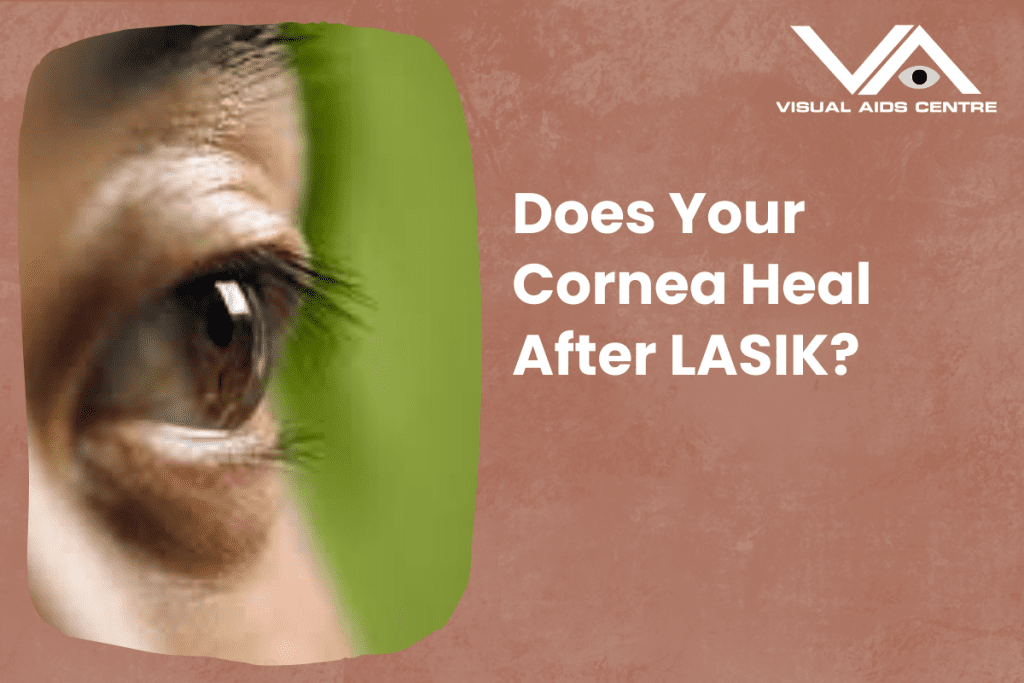Table of Contents
ToggleLASIK is a standard procedure for correcting eyesight in nearsighted, farsighted, or astigmatic persons. LASIK stands for laser in-situ keratomileusis. The LASIK flap is one feature of LASIK surgery that has made it an innovative and effective technique.
The first stage in LASIK eye surgery is partially removing a thin layer of corneal tissue. On one side, this layer of tissue remains attached to the cornea, forming a flap. The shape of the cornea behind the flap is then altered by our doctors using a cold laser. The eyesight impairment that is being treated is corrected by changing the shape of the cornea.
The flap of tissue is replaced when the form of the corneal tissue beneath it has been suitably adjusted. The corneal flap will stick to itself naturally in just a few minutes. This flap acts as a protective covering for the surgically treated portion of the eye, allowing for faster healing. Following the LASIK surgery, the corneal flap begins to recover. When a LASIK flap is used, the corneal tissue can mend up to 90% in as little as 24 hours.
The epithelium, which covers the outer surface of the cornea, closes the edges of the corneal flap for the first day or two after surgery. During the next few weeks, natural substances inside your cornea connect the corneal flap to the underlying tissue.
While the corneal flap will be securely in place and dislodging it while you heal is exceedingly unlikely, we recommend that you avoid rubbing your eyes, especially in the weeks and months after the treatment.

Cornea Recovery After The Surgery
The corneal flap will begin to mend shortly after surgery and be repaired entirely in one to three days. During this time, the epithelium (the cornea’s outer layer) will seal the margins of the freshly formed corneal flap.
The flap returns to its original position with ease, thanks to the precision of the laser used to cut it. The patient will not notice any structural differences in their eyes as they recuperate. Patients will be given protective eyewear to sleep in for the first week following surgery, and it is recommended that they do not wipe their eyes for the first two weeks.
Precautions like these will help avoid complications and ensure that the eyes get the rest they need to heal. It is critical because the LASIK flap will link with the underlying corneal tissue in the first few weeks after surgery.
While LASIK recovery times vary from person to person, the LASIK flap can take up to three months to fully heal. However, after one week, the flap should be mostly healed and secure, and most routine activities should be resumed. Four to five weeks after surgery, it is usually acceptable to continue exercise, swimming, wearing eye makeup, and even contact sports.
You will be able to monitor the healing development of your corneal flap precisely and determine how quickly you may resume your everyday and active activities if you have regular check-ups with your doctor.
Kinds of LASIK Eye Complications
When there are issues with the flap during surgery, LASIK patients are at risk for various flap complications. Incomplete, decentred, or buttonhole flaps can result from this.
Flap problems after surgery include:
- A dislocation occurs when the flap moves away from its original position.
- The flap has folds or wrinkles, and it is not smooth.
- Epithelial ingrowth is when the outer corneal epithelial cells migrate under the flap.
- Diffuse Lamellar Keratitis is a kind of keratitis that occurs under the flap.
- A rough corneal shape characterizes irregular astigmatism.
These issues can cause haziness, distortion, or even double vision, but they are incredibly uncommon.
Treatment of Flap Complications
Regarding other LASIK flap issues, one of the most common is ‘flap striae,’ which are slight wrinkles or folds in the cornea caused by the procedure. While this LASIK adverse effect is not rare, it is usually asymptomatic and only detected through a microscopic examination. Clinically severe flap striae that require treatment are uncommon, occurring in between 0.2 and 1.5 percent of cases. Complications with these wrinkles are rarely life-threatening, and if they do appear, they are usually discovered on the first postoperative day.
If the issue impacts visual acuity, the surgeon may be able to “float” the flap into place by introducing a fluid layer between the flap and the corneal bed and then smoothing out the stria. The surgeon may place a bandage contact lens over the eye to keep the flap in place while it heals.
Prevention
For several hours following surgery, it’s critical to keep your eyes closed as much as possible. It helps to avoid the corneal disturbance that occurs with every blink. You need to wear goggles while sleeping, which will shield your eyes from the elements. Should wear these for the first five nights after your therapy. For the period prescribed by your doctor, avoid contact sports. It’s also crucial not to rub your eyes in the weeks and months following LASIK. Always follow your pre and postoperative instructions, including any restrictions or medications prescribed.
Conclusion
While any operation can be frightening at first, it’s understandable when it affects something as important as your vision. LASIK is an incredibly safe and reliable eye surgery choice, thanks to technological breakthroughs and the continual accumulation of experience from renowned eye surgeons. Even years after your LASIK procedure, you can readily repair most difficulties with the LASIK flap. After LASIK, issues like a dislodged flap are pretty uncommon. Hundreds of people get LASIK surgery, and everything goes perfectly for most of them.









